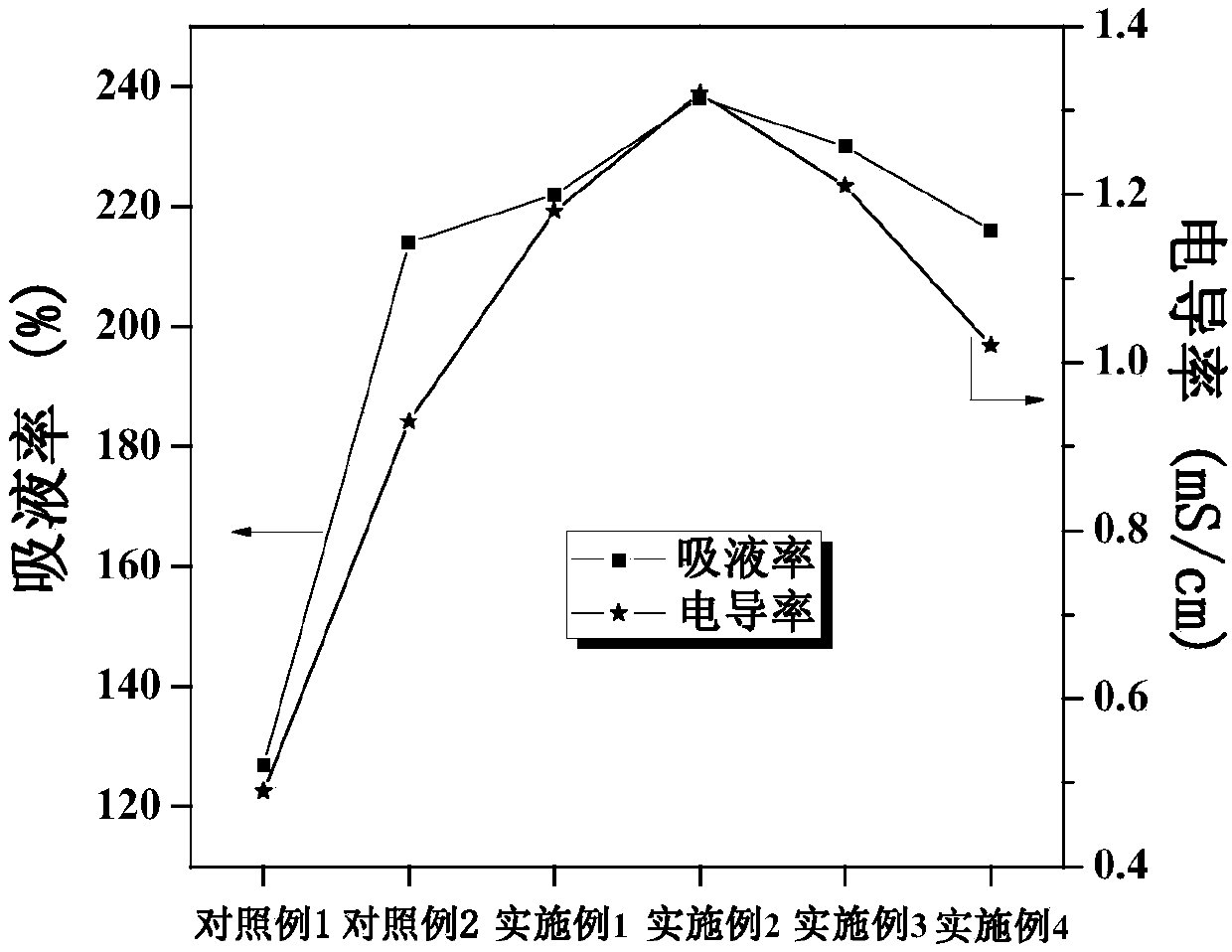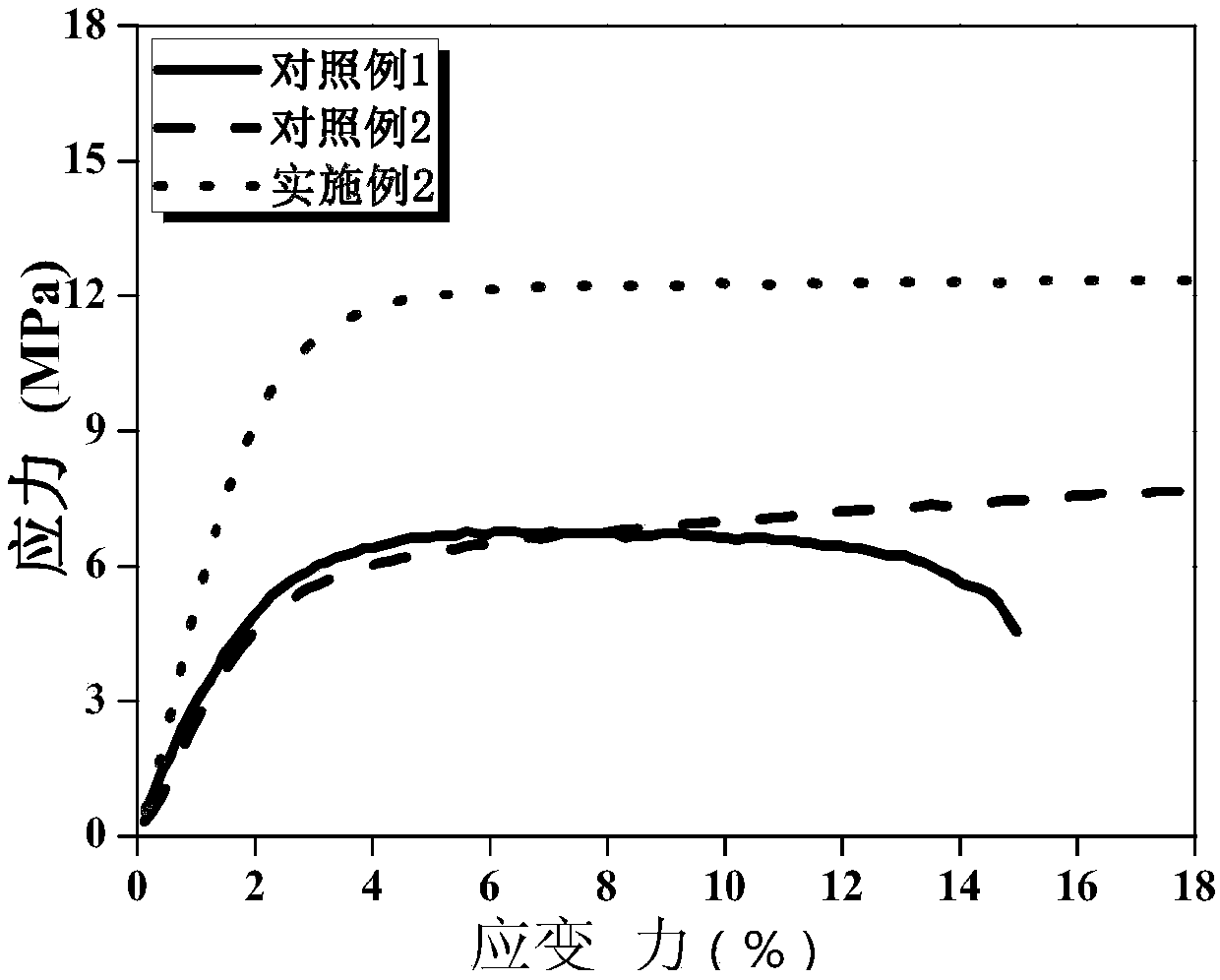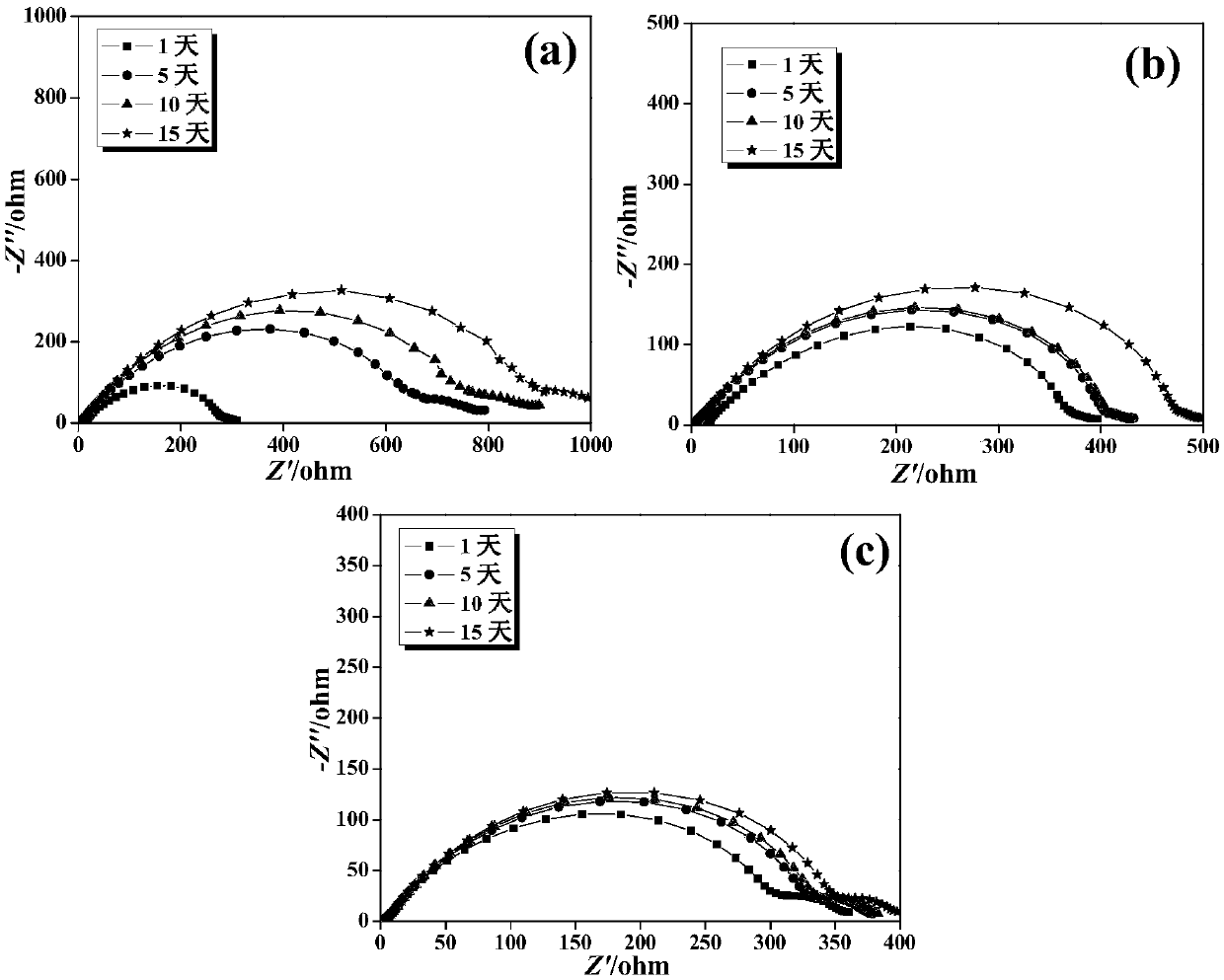Gel polymer electrolyte with blended cellulose and preparation method and application of gel polymer electrolyte
A technology of gel polymers and blended polymers, applied in circuits, electrical components, secondary batteries, etc., can solve the problems of insufficient mechanical strength and low ion conductivity, and achieve the best liquid absorption and liquid retention capacity , good biocompatibility and good electrochemical stability
- Summary
- Abstract
- Description
- Claims
- Application Information
AI Technical Summary
Problems solved by technology
Method used
Image
Examples
Embodiment 1
[0037] (1) The temperature of the oil bath was kept at 30°C, and P(VdF-HFP) and CAP with a mass ratio of 1:1 were added to a three-necked flask filled with acetone, and mechanically stirred continuously for one hour to fully dissolve it to obtain a mass fraction of 12. % gel polymer solution, wherein the stirring speed is 250r / min, that is, the blended polymer solution.
[0038] (2) Pour the blended polymer solution obtained in step (1) into a beaker, then immerse the non-woven fabric in the above blended polymer solution, pull it up quickly after soaking for a few seconds, and volatilize the solvent in the air for 1 hour Then transfer to a vacuum oven at 60° C. for 12 hours to obtain a gel polymer separator of blended cellulose. The thickness of this film is 45-50 micrometers.
[0039] (3) Cut the gel polymer diaphragm prepared in step (2) into a circular size with a diameter of 18mm, and in the glove box, drop electrolyte (1mol / L LiPF 6 +EC+EMC+DEC, the mass ratio of EC:EM...
Embodiment 2
[0042] (1) The temperature of the oil bath was kept at 30°C. P(VdF-HFP) and CAP with a mass ratio of 2:1 were added to a three-necked flask filled with acetone, and mechanically stirred continuously for one hour to fully dissolve it to obtain a mass fraction of 12. % gel polymer solution, wherein the stirring speed is 250r / min, that is, the blended polymer solution.
[0043] (2) Pour the blended polymer solution obtained in step (1) into a beaker, then immerse the non-woven fabric in the above blended polymer solution, pull it up quickly after soaking for a few seconds, and volatilize the solvent in the air for 1 hour Then transfer to a vacuum oven at 60° C. for 12 hours to obtain a gel polymer separator of blended cellulose. The thickness of this film is 45-50 micrometers.
[0044] (3) Process according to step (3) of Example 1.
[0045] (4) Process according to step (4) of Example 1.
Embodiment 3
[0047] (1) The temperature of the oil bath was kept at 30°C, and P(VdF-HFP) and CAP with a mass ratio of 3:1 were added to a three-necked flask filled with acetone, and mechanically stirred continuously for one hour to fully dissolve it to obtain a mass fraction of 12. % gel polymer solution, wherein the stirring speed is 250r / min, that is, the blended polymer solution.
[0048] (2) Pour the blended polymer solution obtained in step (1) into a beaker, then immerse the non-woven fabric in the above blended polymer solution, pull it up quickly after soaking for a few seconds, and volatilize the solvent in the air for 1 hour Then transfer to a vacuum oven at 60° C. for 12 hours to obtain a gel polymer separator of blended cellulose. The thickness of this film is 45-50 micrometers.
[0049] (3) Process according to step (3) of Example 1.
[0050] (4) Process according to step (4) of Example 1.
PUM
| Property | Measurement | Unit |
|---|---|---|
| Thickness | aaaaa | aaaaa |
Abstract
Description
Claims
Application Information
 Login to View More
Login to View More - R&D
- Intellectual Property
- Life Sciences
- Materials
- Tech Scout
- Unparalleled Data Quality
- Higher Quality Content
- 60% Fewer Hallucinations
Browse by: Latest US Patents, China's latest patents, Technical Efficacy Thesaurus, Application Domain, Technology Topic, Popular Technical Reports.
© 2025 PatSnap. All rights reserved.Legal|Privacy policy|Modern Slavery Act Transparency Statement|Sitemap|About US| Contact US: help@patsnap.com



